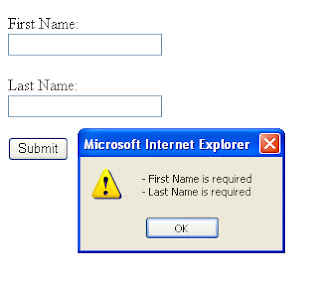In this article, we will discuss like how the ASP.NET validation controls work.
You may check out any cool good website developed using ASP.NET, you will notice that they are filled with forms that clearly execute a lot of handwritten code to perform validations. Note that the validation code is not particularly heavy or bulky to write… it just needs to support the main code and the data-entry types to their original formats.
The validation server control is used to validate the data of an input control. If the data does not pass the validation, it will display an error message to the User, All the scripts cannot be always present in the Client browsers and can be bypassed by malicious users. It is necessary, hence, to implement the same checks on the server anyway, to ensure the smooth operation of the website.
Here are a list of the classic validator controls and their description:
CompareValidator; Compares the value of one input control to the value of another input control or to a fixed value CustomValidator; Allows you to write a method to handle the validation of the value entered RangeValidator; Checks that the user enters a value that falls between two values RegularExpressionValidator; Ensures that the value of an input control matches a specified pattern RequiredFieldValidator; Makes an input control a required field ValidationSummary; Displays a report of all validation errors occurred in a Web page
At SPEC INDIA, our trained team of ASP.NET programmers always takes care of putting server-side as well as the Client-side validations. This is a very much kind of routine process, to ensure the website with all the possible validation controls.
You may check out any cool good website developed using ASP.NET, you will notice that they are filled with forms that clearly execute a lot of handwritten code to perform validations. Note that the validation code is not particularly heavy or bulky to write… it just needs to support the main code and the data-entry types to their original formats.
The validation server control is used to validate the data of an input control. If the data does not pass the validation, it will display an error message to the User, All the scripts cannot be always present in the Client browsers and can be bypassed by malicious users. It is necessary, hence, to implement the same checks on the server anyway, to ensure the smooth operation of the website.
Here are a list of the classic validator controls and their description:
CompareValidator; Compares the value of one input control to the value of another input control or to a fixed value CustomValidator; Allows you to write a method to handle the validation of the value entered RangeValidator; Checks that the user enters a value that falls between two values RegularExpressionValidator; Ensures that the value of an input control matches a specified pattern RequiredFieldValidator; Makes an input control a required field ValidationSummary; Displays a report of all validation errors occurred in a Web page
At SPEC INDIA, our trained team of ASP.NET programmers always takes care of putting server-side as well as the Client-side validations. This is a very much kind of routine process, to ensure the website with all the possible validation controls.

No comments:
Post a Comment